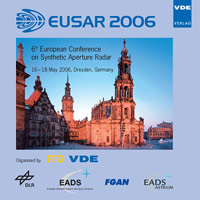On the Determination of Temporal Reflectivity Fading with Multi-Aperture SAR
Conference: EUSAR 2006 - 6th European Conference on Synthetic Aperture Radar
05/16/2006 - 05/18/2006 at Dresden, Germany
Proceedings: EUSAR 2006
Pages: 4Language: englishTyp: PDF
Personal VDE Members are entitled to a 10% discount on this title
Authors:
Sikaneta, Ishuwa C.; Gierull, Christoph (Radar Systems Section, Defence R&D Canada - Ottawa)
Abstract:
From a general point of view, a Synthetic Aperture Radar (SAR) samples the product of independent spatial and a temporal stochastic processes that model the reflecting environment. The SAR observes the spatial component by measuring different points in the scene, while it samples the temporal component at the time of measurement. Over land one assumes a static scene (no temporal change) which means the temporal process has a unit autocorrelation function. One is left only with a spatial variation in reflectivity. Over the ocean, on the other hand, the reflectivity of a given sample point may change over time due to wave motion, thus the temporal autocorrelation function decays from one. This phenomenon is commonly called temporal reflectivity fading. Since a single antenna SAR is inadequate for estimating fading, this paper seeks to identify estimation methods using data collected with a multi-aperture SAR. Specifically, given an autocorrelation function, cgamma γ(τ), it considers a two-antenna system and presents methods that provide an estimate of c γ γ(τ 0)/c γ γ(0), which is directly related to the reflectivity coherence time. Quantifying this fading could reveal interesting surface characteristics. Examples, illustrating the strengths and weaknesses of the proposed coherence time indicators, are provided using measured along-track SAR data collected by Canada’s CV580 SAR.


